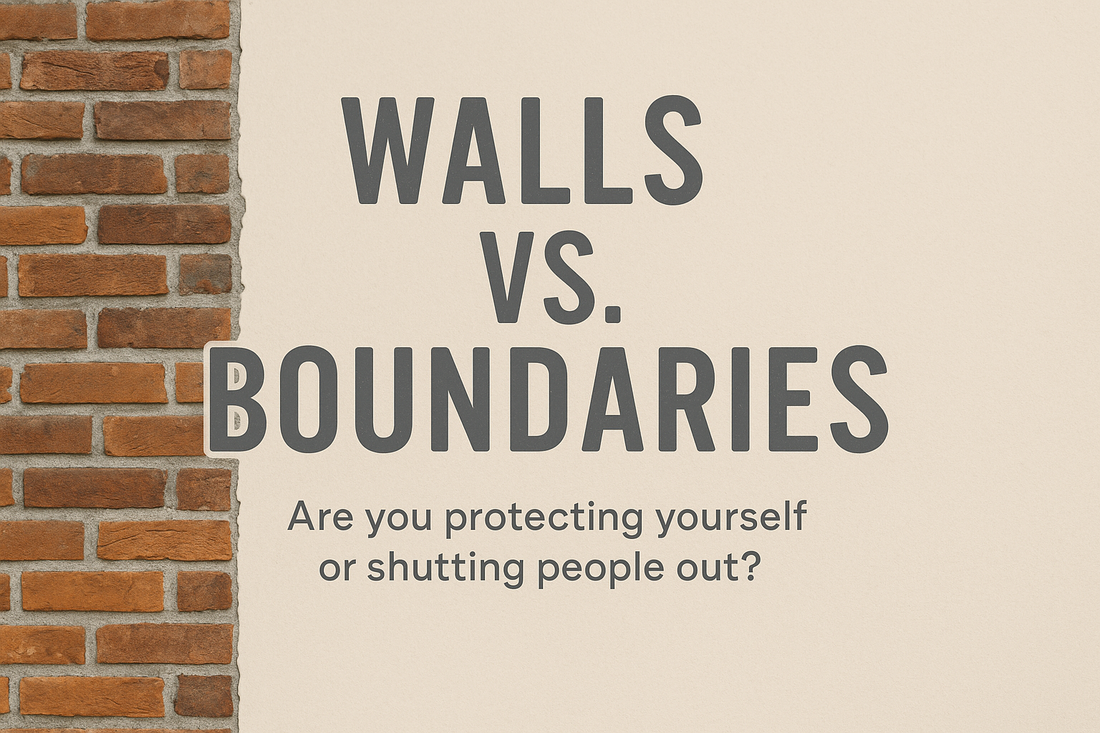Share

Walls vs. Boundaries: Are You Protecting Yourself or Shutting People Out?
Share
We’ve all been hurt. We’ve all experienced betrayal, rejection, or disappointment that shook our sense of safety. When that pain hits deep enough, we instinctively build something to protect ourselves. But here’s the real question: Have you built boundaries, or have you built walls?
At first glance, they may look the same. Both say “I’m not going to let that happen again.” Both can create distance. But one leads to healing. The other leads to isolation.
Let’s break it down.
Boundaries Are Healthy. Walls Are Reactionary.
Boundaries are rooted in self-awareness. They come from a place of understanding what you need to feel safe, respected, and emotionally balanced. They sound like:
-
“I don’t take calls after 9 p.m. so I can protect my sleep.”
-
“I need time to process this conversation before continuing.”
-
“I’m not available for emotional dumping today. Can we talk tomorrow?”
Walls, on the other hand, are built from fear. They’re a defense mechanism formed after repeated pain, and they don’t just keep out the bad—they block the good too. They sound like:
-
“I don’t trust anyone anymore.”
-
“I’d rather be alone than risk getting hurt.”
-
“I don’t talk about my feelings. It never helps.”
How to Know If You’ve Built a Wall or a Boundary
Let’s be real: It can be hard to tell the difference when you’re in survival mode. But ask yourself:
-
Am I protecting my peace—or avoiding vulnerability?
-
Do I communicate my needs—or assume people should “just know”?
-
Do I allow room for connection—or do I push people away before they get too close?
Walls are rigid. They keep everyone out.
Boundaries are flexible. They keep you safe, but still open.
Why We Confuse the Two
Many of us were never taught what a healthy boundary looks like. We were taught to overextend, to never say no, to keep the peace at the cost of our own wellbeing. And when we finally break down, we swing to the other extreme—cutting people off, shutting down, or isolating.
The pendulum swing makes sense. But the healing comes when we find the balance.
So How Do You Shift From Walls to Boundaries?
-
Get honest with yourself.
What pain are you still protecting? What do your walls “guard” that still needs healing? -
Start small.
Practice setting one clear, respectful boundary. It might feel uncomfortable, but it’s a step toward reclaiming your voice. -
Communicate your needs.
People aren’t mind-readers. Boundaries work best when expressed, not just implied. -
Let safe people in.
Not everyone deserves access—but someone does. Let them.
Final Thought: Boundaries Say “I Love Me.” Walls Say “I Don’t Trust You.”
Both come from pain, but only one leads to freedom.
Boundaries protect you while still letting love in. Walls protect you—but they keep you lonely.
You deserve connection. You deserve peace.
You deserve boundaries that honor who you are without hiding the heart of you behind a wall.
